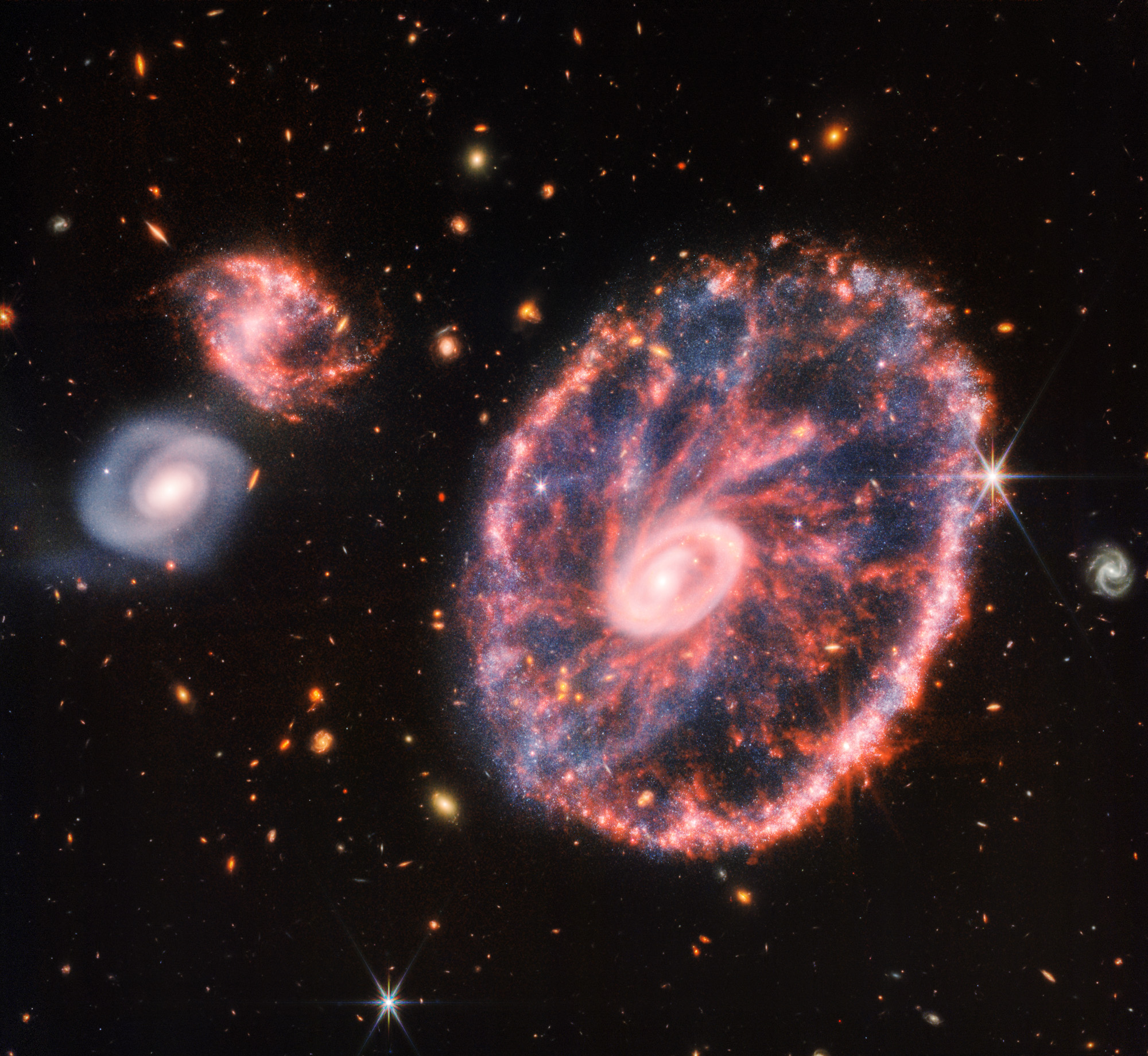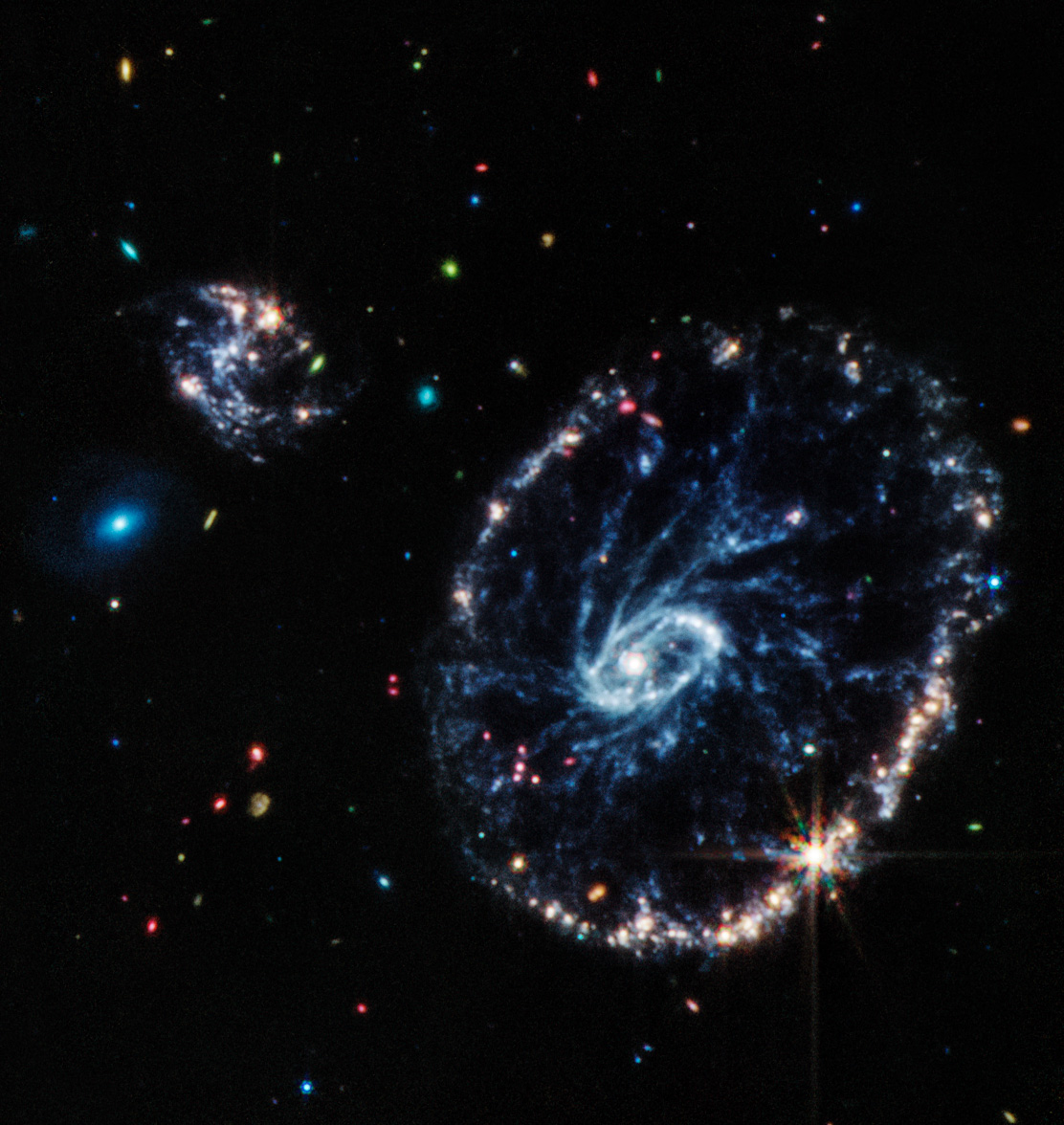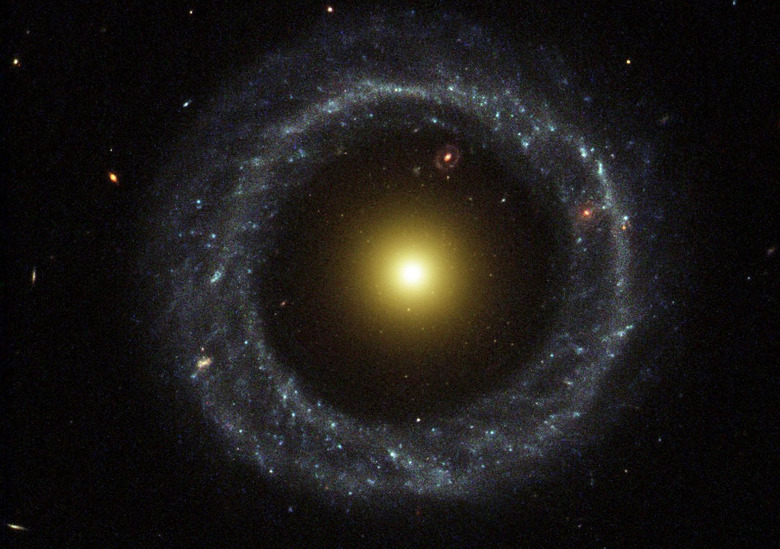Scientists Might've Finally Explained Ring Galaxies, The Rarest Galaxies In The Universe
Ring galaxies are some of the rarest galaxies found throughout our universe, and for years scientists have scratched their heads, trying to figure out exactly how these galaxies came to be. According to astrophysicist Ethan Siegel, we may finally have an explanation for these unique and eye-catching galaxies.
The universe is an expansive place, so it makes sense that galaxies out there might look different. While we have plenty of spiral galaxies, like our own Milky Way, these are only the most common types of galaxies out there. There are still others, like elliptical or irregular galaxies. But only 1 out of 10,000 falls into this super rare category, Siegel says.

In an article published on Big Think, Siegel outlines what he believes could be an explanation for ring galaxies. The first of these galaxies, the Hoag's Object, was just discovered in 1950 and has always stumped researchers because of its unique design. But, according to information gleaned from photos of other ring galaxies, they may come from galactic collisions.
Based on previous research into ring galaxies, Siegel says that they aren't planetary nebulae because they are composed of stars, not of gas and other ejecta. Further, they aren't made from younger galaxies being stretched and ripped apart to surround an older, more massive galaxy.
Siegel also says they aren't an example of gravitational lensing, which we sometimes use to look deeper into the universe using telescopes like the James Webb Space Telescope and can distort our view of objects. Instead, Siegel suggests that ring galaxies occur when one galaxy collides with the center of another galaxy, thus causing ripples throughout it.

These ripples, Siegel explains, then go on to form the ring galaxies that we see and appreciate today. One particularly intriguing piece of evidence is the Cartwheel Galaxy, which Webb imaged last year. Siegel says that a small galaxy pictured to the left appears in disarray, which could be accounted for if it had ripped through the center of the Cartwheel Galaxy.
Of course, it's unclear if this explanation for ring galaxies is the whole truth, as our thoughts and beliefs about the universe always change with new information. Perhaps more information to back up this belief will come in the future, or we'll continue scratching our heads, waiting for more proof to help solidify our beliefs.
